Description
Description: Top quality Chinese hornbill snuff bottle. The bottle is finely carved on one side with the God of blessings and another figure, the God being unrolling a scroll with the inscription “Blessings from the Heavenly Gods”. The other side is carved with a lady bringing auspicious objects and riding a qilin, followed by an attendant holding a fan. This motif is a marriage auspice for having sons. Hence, the whole bottle should be meant as a blessed marriage. About the appearance of this bottle, please read the Notes here below.
Foot/base: Squared foot and concave base
Mark:
Dating: Most probably 18th C because of the finish coating, please read the Notes
Material: Natural hornbill
Size: 58 mm high
Stopper: Plastic stopper imitating hornbill, black collar, bone spoon.
Provenance: Ex Sergia Iessi collection. Dr. Sergia Iessi, from Padua, Italy, was an avid collector of works of Art, spanning from important old masters paintings to Venetian furniture, ceramics of different ancient cultures, and so on. She was well known in the Art environment having been the curator of over 200 art exhibitions including 5 Trivenete Biennials of painting, sculpture and graphics and was director of the cultural/artistic sector of the Ghirardi Foundation of Villa Contarini in Piazzola sul Brenta. She held for many years the Art criticism column of the Corriere della Sera, one of the most important Italian daily newspaper. A degree award in her memory was settled by the University of Padua:
https://www.alumniunipd.it/premio-di-laurea-intitolato-alla-memoria-di-sergia-jessi/
Besides this bottle, the other bottles coming from Ms. Sergia Iessi collection are: the amber bottle O34, O36, the Dehua bottle C50, and the stone bottles (some of them Imperial workshop) S70, S71, S72, S73, S74, S75, S76, S77, S78, S79, S80 and S81.
References:
Notes: What is noticed at first glance by handling this bottle is the high smoothness of the carving of the main body. It is noticeable that the carving is very fine, but there is a lack of crispness. Because of that, an “expert” said that the bottle is not hornbill, it is resin considering also the very dark red at the shoulders, which is not natural in his opinion, and considering the high translucency and the pristine conditions. There is a simple way to spot real versus artificial hornbill. By inside lighting, the yellowish body of the natural hornbill turns reddish, and under UV light the red areas changes to a dark bluish color. All this is shown in the last picture, where we can see at the top the bottle under daylight, in the middle the bottle lighted inside by daylight LEDs, and at the bottom the bottle under a 365-370nm UV light. To whom are interested, under a standard 395-405 nm UV light the bluish color takes a bit of greenish hue, but the phenomenon is the same. As for the apparent lack of details, the reason is because this is one of the very rare hornbill bottles that had a protective treatment which existence is known in literature, but which recipe seems today lost.
A description of such treatment from the net: “It is known that there was once a method of treating hornbill, which seems lost but may have involved heating and permeating the material with some preservative. All known early hornbill pieces seem to have been handled this way, including snuff bottles. This treatment preserves the material very well, giving it a rich translucency and strength. It is only possible to infer this preliminary manipulation from the finished product since no direct information about the techniques of treating hornbill ivory has been recorded. Any special methods used by Chinese craftsmen were always kept as closely guarded secrets by the guilds involved to forestall outside competition.”
All the above is confirmed by inspecting our bottle by a microscope, where it is clearly visible what looks like a varnish deposit in the grooves dug by the engraving chisel, and explain the high smoothness, lack of crisping, high translucency, and pristine conditions. This protective coating is preventing the “layer” separation caused by age that can be seen on old bottles that was not treated that way. Look for example at third and fourth pictures of our hornbill bottle O13.
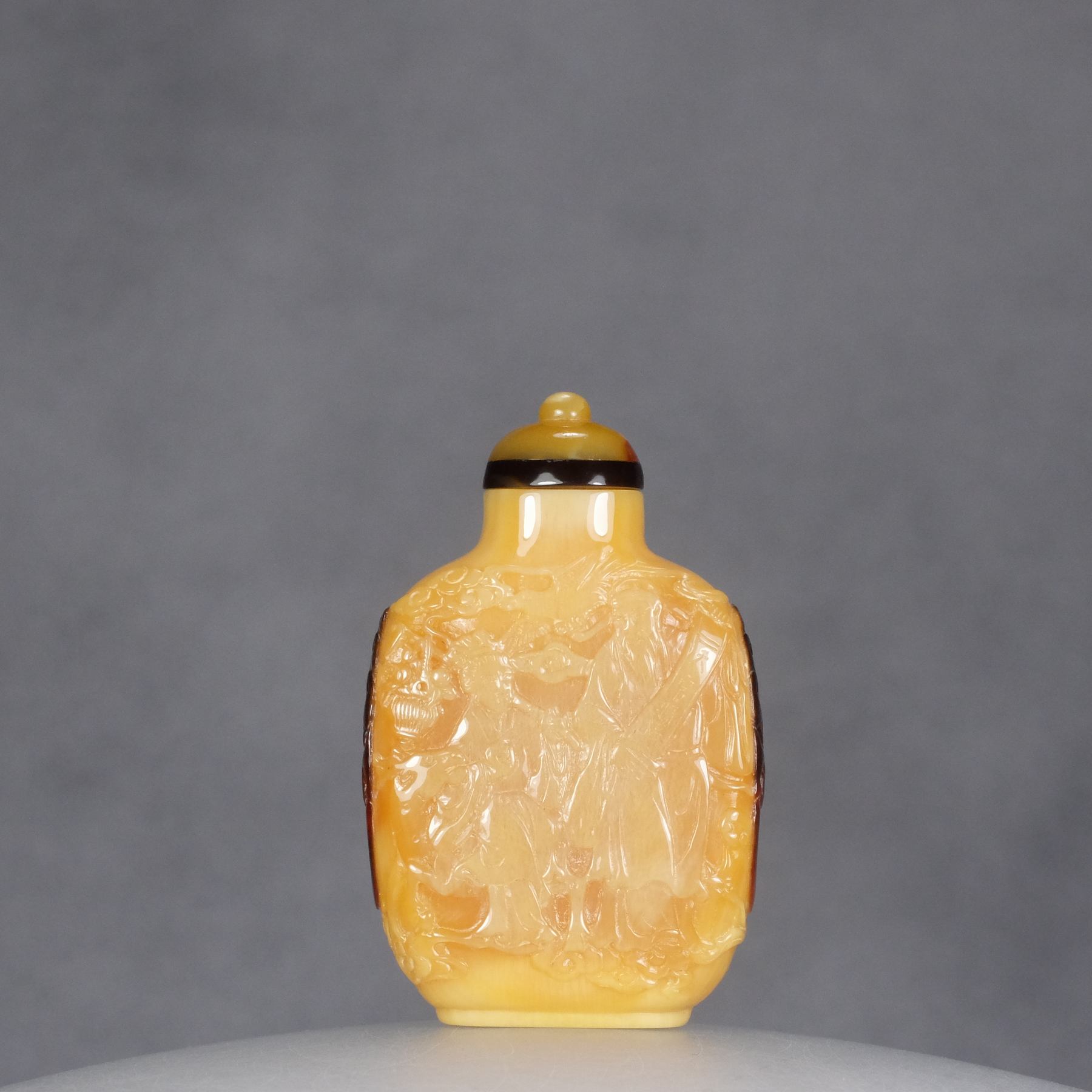


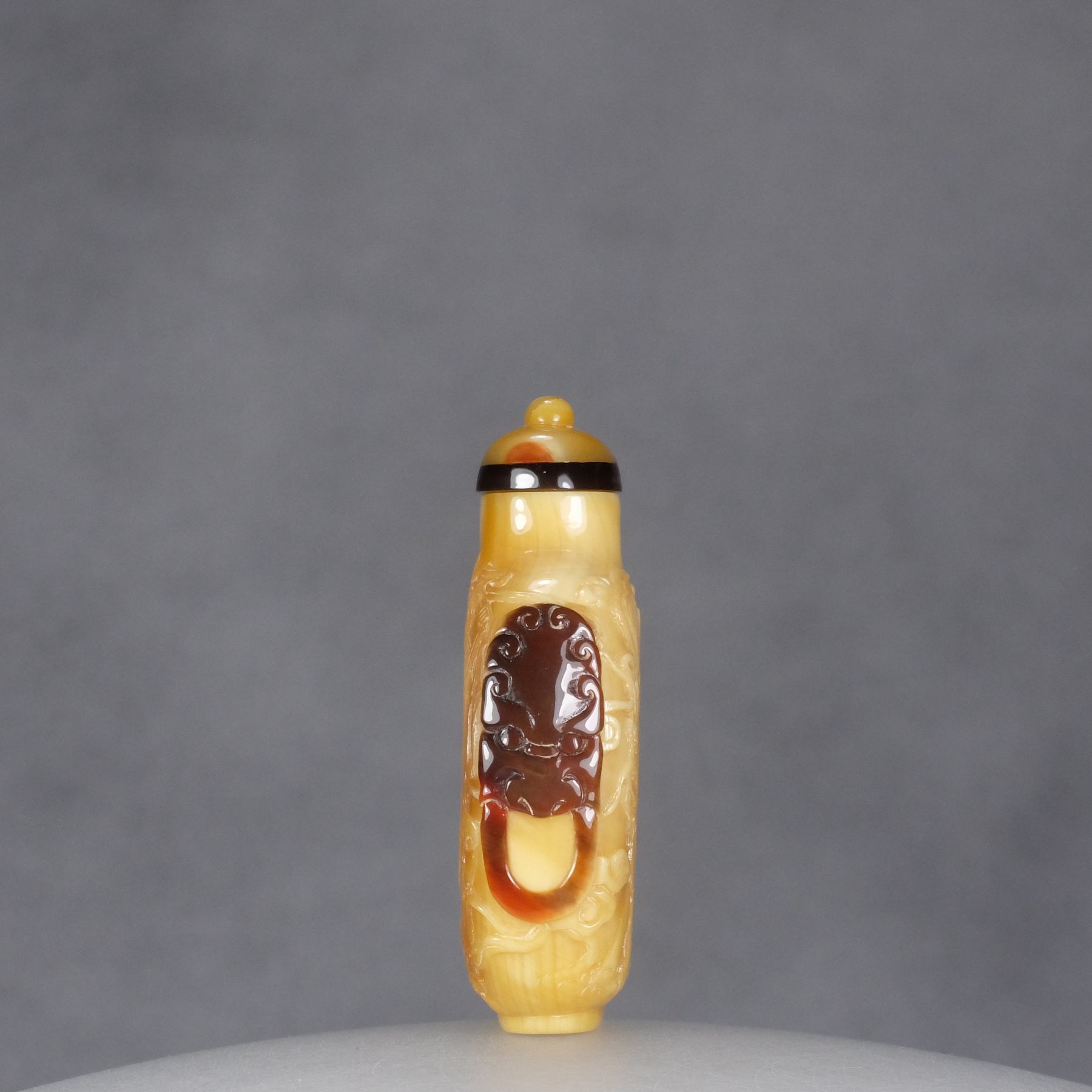

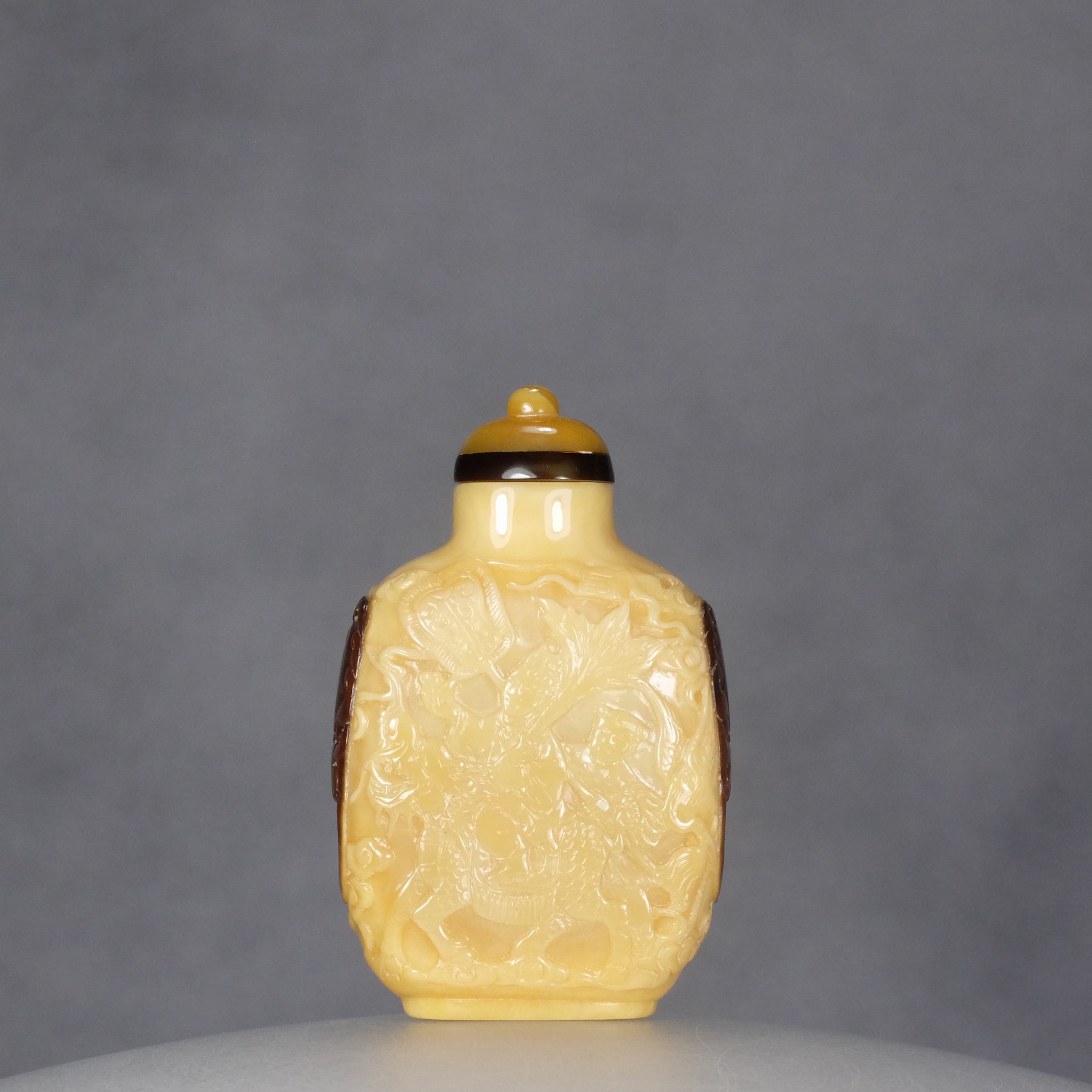





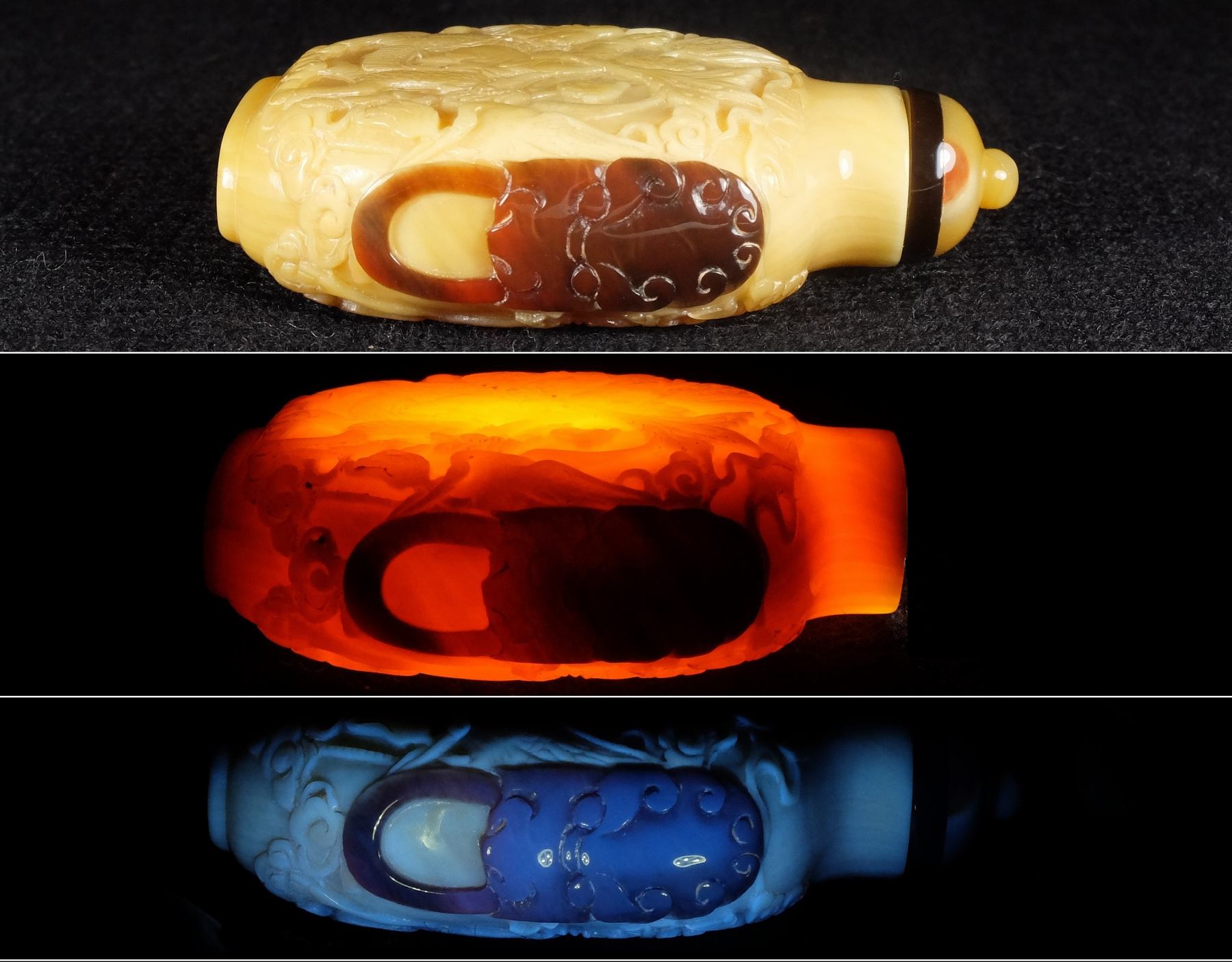


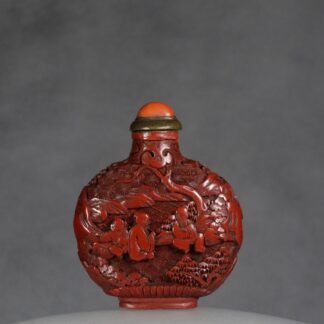
Reviews
There are no reviews yet.